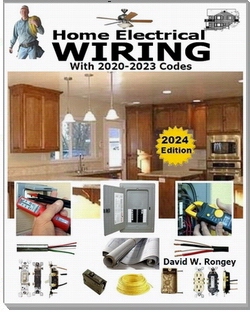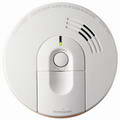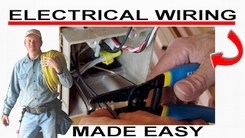Home Smoke Detector Problem
 |
By Dave Rongey
Summary: To make the correct wiring connections for home smoke detectors you must identify which type of smoke detectors you have in your home, otherwise they may not function properly. © By: Dave Rongey |
How to Repair a Smoke Detector Problem
Electrical Question about a Smoke Detector Problem:
Some of our smoke detectors have lost AC power.
I've tried looking for loose connections in adjacent detectors and close-by receptacle/switch boxes, but have found none.
Are these all on the same circuit? If so, then the power lines would go from the 'first' to the 'last' in the house, and so my problem would have to be between the last working one and the first non-working one?
Any idea how to figure out what's up?
Thanks, Brian.Hi Brian, Great Electrical Repair Question!
If you have interconnected smoke detectors, which would be indicated by the third wire, typically yellow, then all of the smoke detectors should be powered by a common feed. It is very common that this circuit be an existing lighting circuit so that in the event of a power loss it would be noticeable. You are correct to inspect each smoke detector junction box and look for a loose connectionBe aware that these detectors do go bad also, so the voltage at each junction box should be verified. You could swap bad detectors with known good ones to test as well. If the home has been remodeled and new smoke detectors were added it is possible that they are not interconnected, although that would be rare and not recommended anyway. Let me know if this helps.
|
||||||||||
The Safest Way to Test Electrical Devices and Identify Electric Wires!The Non-Contact Electrical TesterThis is a testing tool that I have had in my personal electrical tool pouch for years, and is the first test tool I grab to help identify electrical wiring. It is a Non-contact tester that I use to easily Detect Voltage in Cables, Cords, Circuit Breakers, Lighting Fixtures, Switches, Outlets and Wires. Simply insert the end of the tester into an outlet, lamp socket, or hold the end of the tester against the wire you wish to test. Very handy and easy to use.
The Quickest Way to Check for Faulty Electrical Wiring!The Plug-In Outlet TesterThis is the first tool I grab to troubleshoot a problem with outlet circuit wiring. This popular tester is also used by most inspectors to test for power and check the polarity of circuit wiring. It detects probable improper wiring conditions in standard 110-125 VAC outlets Provides 6 probable wiring conditions that are quick and easy to read for ultimate efficiency Lights indicate if wiring is correct and indicator light chart is included Tests standard 3-wire outlets UL Listed Light indicates if wiring is incorrect Very handy and easy to use.
Strip Off Wire Insulation without Nicking and Damaging the Electric Wire!The Wire Stripper and Wire CutterMy absolute favorite wire stripping tool that I have had in my personal electrical tool pouch for years, and this is the tool I use to safely strip electrical wires. This handy tool has multiple uses: The wire gauges are shown on the side of the tool so you know which slot to use for stripping insulation. The end of the tool can be used to grip and bend wire which is handy for attaching wire onto the screw terminals of switches and outlets.. The wire stripper will work on both solid and stranded wire. This tool is Very Handy and Easy to Use. |
||
Residential Electrical Parts and AccessoriesLight Switches 120volt Outlets Circuit Breakers Electrician Tools Voltage Testers |















